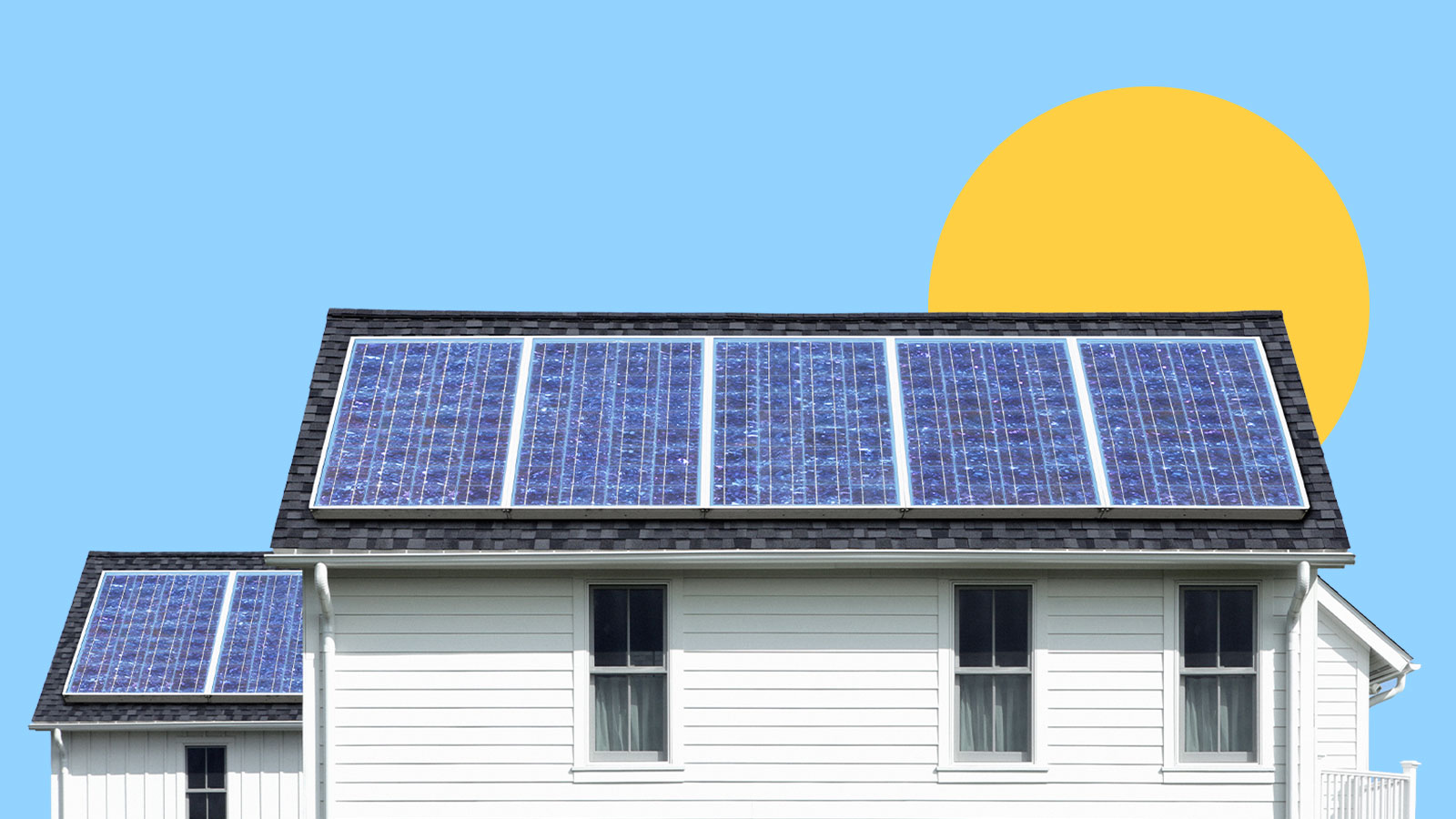This coverage is made possible through a partnership with WABE and Grist, a nonprofit, independent media organization dedicated to telling stories of climate solutions and a just future.
The neighborhood near Savannah, Georgia, where rooftop solar installers Nicole Lee and Seth Gunning met up one fall afternoon was “ideal” for solar panels, they agreed. The houses were relatively new, and the one they were eyeing had a clear expanse of roof in perfect condition.
“This is an amazing candidate for solar because it is solar ready,” said Lee, the owner of Be Smart Home Solutions. “We know they have the newer upgraded electrical system. Plenty of sun because it is a newer neighborhood, so there are no mature trees.”
Lee and Gunning weren’t there to sell solar panels; they were evaluating the house for the new Georgia BRIGHT solar leasing program, funded by the national nonprofit Capital Good Fund. Available to households earning less than $100,000 annually, the program aims to reduce energy bills by making solar power affordable. This house, Gunning said, could expect a savings of about $400 a year.
Savings like that, along with other benefits of solar energy like avoiding fossil fuel emissions and relying less on the power grid, remain out of reach for many people in that income bracket because of the high upfront cost. While the median income of solar adopters has dropped from $140,000 in 2010 to $117,000 in 2022, their incomes still skew higher than most.
Buying solar panels and having them installed typically costs tens of thousands of dollars. While there’s a substantial federal tax credit to mitigate that cost, for individual households it can only offset a tax liability — if you don’t owe very much on your taxes, or you typically get a tax refund, you can’t benefit from the credit.
But a recent law could change that. Under the Inflation Reduction Act, nonprofits like Capital Good Fund can now claim the tax credit as a direct refund, then pass those savings on to the customers who sign on to the Georgia BRIGHT program. It’s especially important to provide solar for the moderate-income households the program is seeking, organizers said, because those families often have to spend a greater share of their income on energy.
“This program levels the playing field for those families who are facing those energy burdens to help them reduce their energy costs,” said Lee.
While solar leasing isn’t new, in the past it’s been offered mostly by for-profit companies. The change in tax law, however, has opened the field to nonprofits, who can often charge less, said Capital Good Fund founder and CEO Andy Posner.
“So if it’s a $10,000 system, and we’re gonna get a $3,000 refund check from the IRS, it costs us less to purchase the system,” he said. “Also because we don’t have the same requirements for return on investment as a for-profit.”
Capital Good Fund’s Georgia BRIGHT program is in its pilot phase, aiming to add solar to around 200 roofs in the next few months. But the goal, Posner said, is to go nationwide.
“This pilot is about impacting 200 lives, but it’s also about creating a model for serving 200,000 over the next 10 years,” he said. “Both within Georgia and in other states, there’s a tremendous interest.”
The initiative has already expanded to include churches and smaller nonprofits in Georgia, and Posner said the organization is in “various stages of conversation” with about 10 other states interested in a similar leasing program.
And more money is coming: In June, the Environmental Protection Agency announced it will dole out $7 billion in IRA funds to states, tribal governments, nonprofits, and others for programs that enable “low-income households to access affordable, resilient, and clean solar energy.” Grantees will be selected next spring.
“It’s going to enable a real scale-up of these programs, in Georgia and beyond,” Posner said of the grant funding.
For Savannah homeowner David Morgan, the pilot project in Georgia was a good fit. He bought his 1955 house a couple of years ago, and he’s been looking to install solar. Morgan works in disaster recovery, earning $65,000; he said he sees a lot of places dealing with extended power outages and wants to be less reliant on the grid. He also pays a steep $270 a month for electricity.
“I’ll be into the solar panel program for $98 a month,” he said of his Georgia BRIGHT solar panels. “And I should be using between $60 and $70 a month from Georgia Power.”
In other words, once the solar is installed early next year, Morgan can expect a savings of about $100 a month. He said he’ll put that money toward retirement.
“Every little bit helps towards trying not to work when I’m old,” he said.
Morgan has opted for a system with battery storage, so he’ll have backup power when the sun isn’t shining, or when there’s an outage on the grid. And he said he’s also glad he’ll be doing his part to fight climate change.
He hopes more people will get on board with renewable energy. “This is one of those programs that anybody can actually get involved in,” he said.




